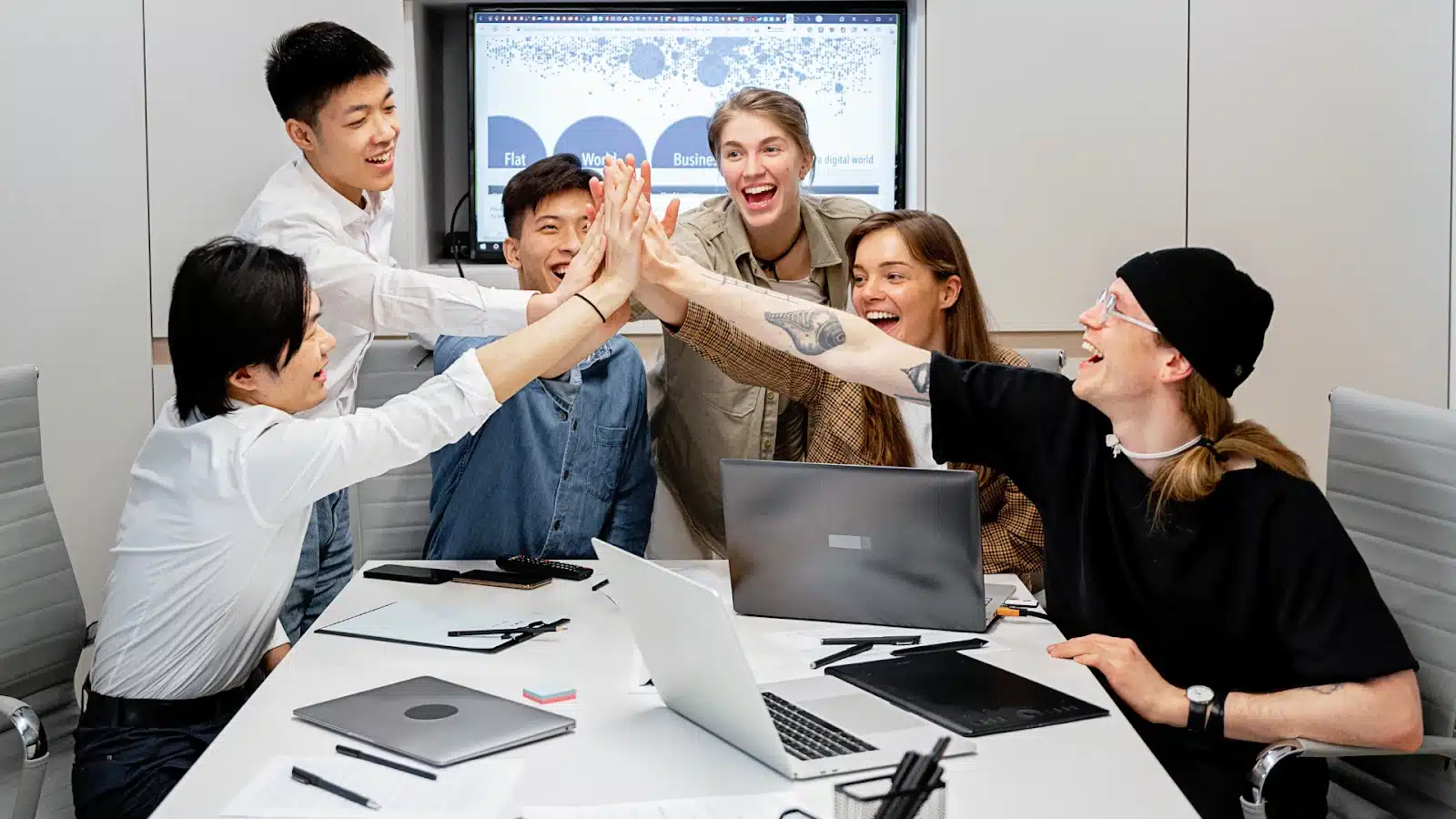
Essential Conference Agenda Template for High-Performing Teams
Creating an effective conference agenda is crucial for high-performing teams aiming to maximize productivity and engagement. A well-structured agenda not only sets the tone for the event but also ensures that all participants are aligned on objectives and outcomes. Below is a comprehensive guide to crafting an essential conference agenda that resonates with your team’s goals and enhances collaboration.
Understanding the Purpose of Your Conference
Before diving into the nitty-gritty of agenda creation, it’s vital to clarify the purpose of your conference. Is it to brainstorm new ideas, review project progress, or foster team-building? Understanding the primary objective will guide the structure and content of your agenda.
For instance, if the aim is to generate leads and engage potential clients, incorporating interactive elements such as Q&A sessions can be beneficial. This aligns with the dream outcome of transforming presentations into engaging conversations, ensuring every participant feels involved and valued. Additionally, consider incorporating breakout sessions where smaller groups can discuss specific topics in-depth. This not only enhances engagement but also allows for a variety of perspectives to be shared, enriching the overall experience.
Define Key Goals
Establishing clear goals for the conference will help keep discussions focused and productive. Goals could range from launching a new product to improving team communication. Each goal should be specific, measurable, achievable, relevant, and time-bound (SMART).
For example, if the goal is to enhance audience engagement, consider integrating tools like PresEngage, which facilitate real-time feedback and questions, and utilize AI-powered Q&A to capture audience insights effortlessly. Furthermore, setting up a pre-conference survey can help gauge participant interests and expectations, allowing you to tailor sessions that resonate with the audience’s needs. This proactive approach not only fosters a sense of ownership among attendees but also ensures that the conference delivers maximum value.
Identify Your Audience
Knowing your audience is crucial for tailoring the agenda to their needs. Are they internal team members, external stakeholders, or a mix of both? Different groups may require different approaches, so understanding their backgrounds and expectations can help in crafting a more relevant agenda.
For instance, sales teams might benefit from sessions focused on lead generation strategies, while educators may prefer discussions on teaching methodologies. This ensures that every attendee finds value in the conference. Additionally, consider the varying levels of expertise within your audience; providing sessions that cater to both novices and experts can create a more inclusive atmosphere. Incorporating networking opportunities can also facilitate connections among attendees, allowing them to share insights and experiences that can further enrich the discussions and learning outcomes throughout the conference.
Creating the Agenda Structure
A well-structured agenda is essential for guiding the flow of the conference. It should include time slots for each session, breaks, and interactive activities. Here’s a suggested structure:
Opening Session
Kick off the conference with an engaging opening session that sets the tone. This could include a keynote speaker or a panel discussion that aligns with the conference’s theme. The opening should aim to captivate the audience and provide a roadmap for the day ahead.
Consider using interactive elements, such as live polls or audience questions via SMS, to foster engagement right from the start. This not only makes the session more dynamic but also encourages participants to actively contribute.
Additionally, incorporating multimedia presentations or short video clips related to the theme can enhance the opening session’s impact, making it visually stimulating and informative. A well-chosen speaker who resonates with the audience can also inspire attendees, setting a positive and energetic tone for the rest of the conference.
Breakout Sessions
Breakout sessions allow for deeper dives into specific topics. These can be organized based on the interests of different audience segments, ensuring that everyone is engaged with content relevant to them. Each session should have a clear objective and desired outcome.
PresEngage can enhance these sessions by allowing attendees to submit questions or comments in real-time. This creates an interactive environment where everyone can contribute, leading to richer discussions and insights.
To maximize the effectiveness of breakout sessions, consider inviting subject matter experts to facilitate discussions. Their expertise can guide conversations, ensuring that participants leave with actionable insights and a deeper understanding of the topics. Additionally, providing resources or handouts related to each session can help attendees retain information and encourage further exploration post-conference.
Networking Opportunities
Incorporating networking opportunities into the agenda is vital for building relationships among participants. This could be in the form of informal meet-and-greets, structured networking sessions, or even dedicated breaks for casual conversations.
Encouraging attendees to share their contact information and insights can lead to valuable connections. Tools that facilitate easy sharing of information, such as SMS-based platforms, can streamline this process and ensure that no opportunity is missed.
Moreover, consider organizing themed networking events that align with specific interests or industries represented at the conference. These can provide a more focused environment for attendees to connect with like-minded individuals, fostering collaboration and potential partnerships. Incorporating icebreaker activities can also help ease participants into conversations, making networking less daunting and more enjoyable.
Incorporating Interactive Elements
To maintain engagement throughout the conference, it’s essential to incorporate interactive elements into the agenda. These can include Q&A sessions, live polls, and group discussions that encourage participation and feedback. By weaving these interactive components into the fabric of the event, organizers can create a dynamic atmosphere that fosters collaboration and a sense of community among attendees.
Real-Time Q&A Sessions
Real-time Q&A sessions allow attendees to ask questions and receive immediate responses. This not only keeps the audience engaged but also ensures that their concerns are addressed promptly. AI-powered solutions, such as those offered by PresEngage, can facilitate this process by providing instant answers based on the presentation content. The ability to address questions on-the-fly can significantly enhance the learning experience, as it allows for clarification of complex topics and encourages deeper exploration of the subject matter.
By automating the Q&A process, presenters can focus on delivering their message while still capturing valuable insights and leads from the audience. Moreover, the integration of chat features enables attendees to upvote questions they find most relevant, ensuring that the most pressing inquiries are prioritized. This not only streamlines the interaction but also empowers participants to take an active role in shaping the dialogue, making them feel more invested in the conference’s outcomes.
Live Polling and Feedback
Live polling is an effective way to gauge audience sentiment and preferences in real-time. This can be particularly useful during discussions to understand which topics resonate most with participants. Additionally, collecting feedback at the end of each session can help improve future conferences. The data gathered from these polls can be invaluable for tailoring content to meet the specific interests and needs of the audience, thereby enhancing overall satisfaction and engagement.
Using SMS for polling ensures that all attendees can participate easily, regardless of their technical expertise. This frictionless approach encourages more people to share their opinions, enhancing the overall quality of discussions. Furthermore, the results of live polls can be displayed instantly on screens, sparking further conversation and debate among attendees. This immediate feedback loop not only enriches the experience but also fosters a sense of camaraderie as participants realize they share similar views or differing perspectives, prompting deeper discussions and networking opportunities during breaks.
Follow-Up and Action Items
After the conference, it’s crucial to follow up with attendees to reinforce the connections made and the insights shared. This can be achieved through personalized emails summarizing key takeaways and action items. A thoughtful follow-up not only strengthens relationships but also demonstrates a commitment to ongoing dialogue and collaboration. By acknowledging the contributions of participants and highlighting specific discussions, organizers can foster a sense of community and encourage further engagement.
Automated Follow-Up Processes
Implementing automated follow-up processes can streamline this task significantly. Tools that capture attendee information and engagement data, like PresEngage, can facilitate personalized follow-ups based on the conversations that took place during the conference. These systems can segment attendees based on their interests or the sessions they attended, allowing for targeted messaging that resonates with each individual. This level of customization can make attendees feel valued and understood, enhancing their overall experience.
Automated follow-ups not only save time but also ensure that no lead or opportunity slips through the cracks, aligning with the goal of turning engagement into tangible business results. Moreover, integrating feedback mechanisms within these follow-ups can provide additional insights into attendee satisfaction and areas for improvement, creating a feedback loop that can be invaluable for future planning.
Analytics and Insights
Utilizing analytics to measure engagement and participation can provide valuable insights for future events. Tracking metrics such as question volume, participant demographics, and engagement levels can help in refining the agenda and improving overall effectiveness. By understanding which sessions garnered the most interest or which topics sparked the most discussion, organizers can make informed decisions about future programming and speaker selection.
By analyzing this data, teams can tailor future conferences to better meet the needs of their audience, ensuring continuous improvement and relevance. Additionally, leveraging social media analytics can offer a broader perspective on how the event was perceived in the digital space, providing insights into attendee sentiment and the overall impact of the conference. This multifaceted approach to data collection not only enhances the planning process but also helps in crafting a narrative that showcases the event’s success and areas for growth, thereby attracting even more participants in subsequent years.
Sample Conference Agenda Template
Here’s a sample agenda template to help guide your planning process:

Day 1: Conference Overview
- 9:00 AM – 9:30 AM: Opening Keynote: Setting the Stage for Success
- 9:30 AM – 10:30 AM: Breakout Session 1: Innovative Strategies for Lead Generation
- 10:30 AM – 11:00 AM: Networking Break
- 11:00 AM – 12:00 PM: Breakout Session 2: Enhancing Team Collaboration
- 12:00 PM – 1:00 PM: Lunch & Learn: Industry Trends
- 1:00 PM – 2:00 PM: Panel Discussion: Overcoming Challenges in the Market
- 2:00 PM – 3:00 PM: Real-Time Q&A Session
- 3:00 PM – 4:00 PM: Closing Remarks & Action Items
Day 2: Deep Dives and Networking
- 9:00 AM – 10:00 AM: Workshop: Leveraging Technology for Engagement
- 10:00 AM – 11:00 AM: Breakout Session 3: Building a High-Performing Team
- 11:00 AM – 11:30 AM: Live Polling & Feedback Session
- 11:30 AM – 12:30 PM: Networking Lunch
- 12:30 PM – 1:30 PM: Breakout Session 4: Future-Proofing Your Business
- 1:30 PM – 2:30 PM: Interactive Wrap-Up: Key Takeaways
- 2:30 PM – 3:00 PM: Closing Networking & Farewell
Final Thoughts
Crafting an essential conference agenda is a pivotal step in ensuring the success of any event. By focusing on clear objectives, interactive elements, and effective follow-up processes, teams can create a dynamic and engaging experience that drives results.
Utilizing innovative tools like PresEngage can further enhance audience engagement and streamline the entire process, making it easier for presenters to connect with their audience and capture valuable insights. With the right approach, every conference can transform into a high-conversion experience, fostering collaboration and driving business success.
Unlock the Full Potential of Your Conferences with PresEngage
Capitalize on the power of engagement at your next conference with PresEngage. Our AI-powered SMS Q&A platform is designed to revolutionize audience interaction, making every session more dynamic and inclusive. Say goodbye to the hurdles of app downloads and microphone shyness, and hello to seamless, real-time engagement that captures every insight. Whether you’re a presenter, educator, or business professional, PresEngage is your partner in transforming presentations into impactful conversations that drive results. Start for FREE today and experience the future of audience engagement.
You Finish. Your Presentation Doesn't.
Dazzle your audience with Real-Time Q&A powered by your AI Co-Presenter.(Patent Pending)
PresEngage™ makes you look brilliant by connecting with everyone, instantly.
No Credit Card Required. 100% Risk Free.
Frictionless Audience Experience GUARANTEED.






